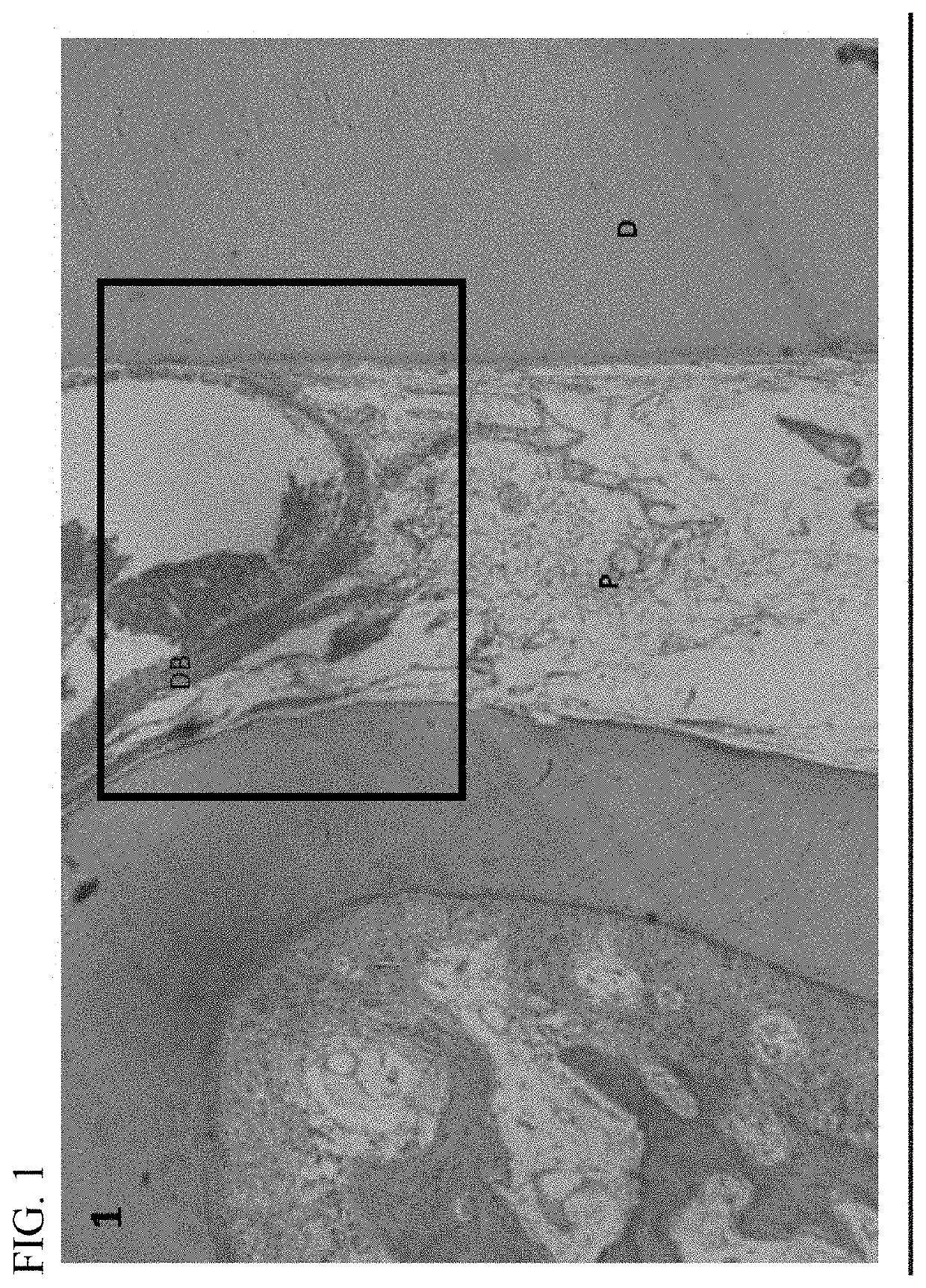Dental pulp capping composition and method of preserving and regenerating capped pulp and dentin bridge
a pulp and dentin technology, applied in the field of dental reconstruction, can solve the problems of pulpal inflammation, high risk of inflammation and infection, and severe pain, and achieve the effect of easy standardization of composition
- Summary
- Abstract
- Description
- Claims
- Application Information
AI Technical Summary
Benefits of technology
Problems solved by technology
Method used
Image
Examples
examples
[0080]Exposure of vital dental pulp, either accidentally or by design, is a complication commonly seen in dental practice. Preserving the dental pulp or part of it in a healthy state is important in treating teeth with exposed vital pulp. To test the effects of exposing vital dental pulp to the amelogenin and PGA composition of the invention, the following experiments were conducted.
[0081]Recombinant amelogenin was produced essentially as described by Moradian-Oldak J, Paine M L, Lei Y P, et al. Self-assembly properties of recombinant engineered amelogenin proteins analyzed by dynamic light scattering and atomic force microscopy. J Struct Biol 2000; 131:27-37; Viswanathan H L, Berry J E, Foster B L, et al. Amelogenin: a potential regulator of cementum-associated genes. J Periodontol 2003; 74:1423-31 (each incorporated by reference). Recombinant poly-histidine-tagged murine 180 amino acid long amelogenin (rp(H) M180) is identical to the authentic mouse full-length amelogenin except f...
PUM
| Property | Measurement | Unit |
|---|---|---|
| time | aaaaa | aaaaa |
| time | aaaaa | aaaaa |
| time | aaaaa | aaaaa |
Abstract
Description
Claims
Application Information
 Login to View More
Login to View More - R&D
- Intellectual Property
- Life Sciences
- Materials
- Tech Scout
- Unparalleled Data Quality
- Higher Quality Content
- 60% Fewer Hallucinations
Browse by: Latest US Patents, China's latest patents, Technical Efficacy Thesaurus, Application Domain, Technology Topic, Popular Technical Reports.
© 2025 PatSnap. All rights reserved.Legal|Privacy policy|Modern Slavery Act Transparency Statement|Sitemap|About US| Contact US: help@patsnap.com



